The main aim of these seminars is to bring together everyone with an interest in
Robotics, i.e., researchers in robotics, professionals in a variety of robot application domains and stakeholders from the general public to discuss the growing role of robots in everyday life and the emerging technical, regulatory, ethical and legal challenges being faced to satisfy the ageing societal requirements for personal care and medical services.
The role of robots is evolving rapidly from their industrial manufacturing roots to a wide variety of service applications where close human-robot interaction is needed. A key feature of robots is that they possess a “degree of autonomy” and hence can have the capability to make independent decisions for fulfilling their intended task. Good examples are physical assistant robots which are “personal care robots that physically assist a user in performing required tasks by providing supplementation or augmentation of personal capabilities”, these are planned to help with personal mobility for maintaining independence and quality of life of elderly persons. Other examples include medical robots for surgery, or rehabilitation of patients or provide support to disabled persons (such as mobility of amputees or education of children with autism). Even driverless cars and drones can come under the “robotics agenda”. How the new emerging robots and their autonomous capabilities should be introduced in the various applications is causing a variety of concerns relating to safety, ethics, and law.
The DRAFT programme is now available as a pdf flyer in the link above.
The main areas of focus of the second seminar of the series are:
- Industrial robots
- Mobile robots
- Service robots

Prof Bryan Bridge,
TWI & CLAWAR
Professor Bryan Bridge BSc DSc FInstNDT CEng FIET CPhys FInstNDT FRSA is a Physics and Engineering Research Consultant with his own name company. In that capacity he has been involved in recent awards of funding to clients of more than 35 collaborative research projects in materials processing and engineering, in the renewables, offshore, nuclear, aerospace, transport and manufacturing sectors; with a strong focus on automated and robotic deployment of NDE and Continuous On Line Structural Health Monitoring. In 1965, after a DSIR research studentship in low-temperature solid state physics at the University of Leeds, he became a lecturer and then senior lecturer in physics at Brunel University and was awarded a Higher Doctorate for his collected works on non-destructive Characterization of Materials. This EPSRC Funded work included: (1) Physical acoustics and quantum 2-well studies of electronic glasses from 4-600K (2) Design and characterisation of electrically conducting polymers and composites. (3) Pioneering work on novel ultrasonic, electromagnetic and radiological measurement instruments including a world first portable 3D Compton Scatter imaging collimator for underwater off shore inspection. In 1989 he moved to the now London South Bank University as Professor and Head of the Department of Electrical and Electronic department and subsequently Head of the School of Electrical, Electronic and Information Electronic, the School of Engineering and Deputy Dean of the Faculty of Engineering, Science, and the Built Environment. In 1992 He founded the Research Centre of Automated and Robotic NDT with a Centre of Excellence Award from the then PCFCE and was Co-Director until 2008. He has been Principal Investigator of more than 70 externally funded research projects since 1974 and published over 320 research papers. He is a Trustee and Director of the CLAWAR Association Ltd and a permanent Honorary Member of The Physical Society Club whose elected members are limited to 31 and celebrates its 100th Anniversary in 2019.
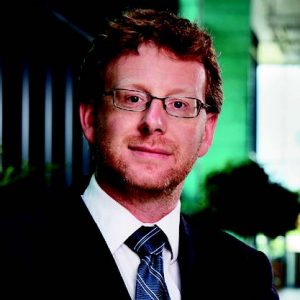
Jeremy Hadall
MTC Coventry
Presentation slides
This talk will to look at how intelligent and adaptable automation systems can be developed for advanced manufacturing processes requiring human robot interaction within a safe dynamic environment and how they can be integrated and run alongside existing work practices. We will look at current and coming technologies on human robot interaction, existing safety standards and where we need to be in order to have a safe and practical human robot collaboration.
Jeremy Hadall has been developing automation systems for industry since leaving the University of Hertfordshire with a Masters in Engineering. Since 2010, he has led the development of advanced automation systems for the Manufacturing Technology Centre where he is Chief Technologist for Robotics and Automation. The MTC has spearheaded the wider uptake and the development of new automation concepts within UK manufacturing.
Jeremy Hadall is also a Chartered Engineer with the Institution of Engineering Technology and chairs its Design & Production Executive Committee. He also chairs the Automation Forum of the UK’s High Value Manufacturing Catapult and is a member of the British Automation and Robotics Association’s council.”
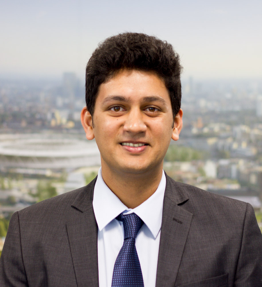
Satwik Mehta (Replaced by Nahema Sylla)
HSSMI, UK
Presentation slides
Details of ISO TS15066 for Industrial Collaborative Robots and the opportunities and challenges for manufacturing.
Satwik Mehta manages the Virtual Engineering Team at HSSMI. He has extensive experience in manufacturing predominantly in the automotive sector. After graduating from the University of Pune in Mechanical Engineering, he worked for the Volkswagen Group on multidimensional facets of planning new products and processes. Satwik has also acquired an MSc in Manufacturing Engineering from the University of Warwick where he developed a framework for operations sustainability. Satwik oversees the delivery of research and commercial programs for the Virtual engineering team at HSSMI. He is also leading an Industrial working group for developing design and installation guidelines for collaborative robots.
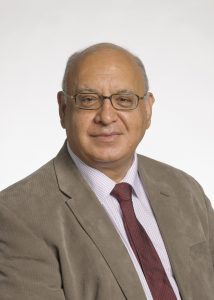
Prof. Tariq Sattar
London South Bank University
Presentation slides
Reliable Non Destructive Testing (NDT) is vital to the integrity, performance management and sustainability of capital assets in safety critical industries such as oil and gas, aerospace, transportation, power generation and off-shore and subsea operations. The presentation will show climbing and swimming robots developed to detect weld and corrosion defects on ship hulls, floating platforms, mooring chains, petrochemical storage tanks, pressure vessels, concrete structures, wind blades and aircraft wings and fuselages. Such developments provide the possibility of making a huge saving by reducing outage times or carrying out the NDT in-service thus preventing expensive outages.
Professor Tariq Sattar is a pioneer in the development of robotic Non-Destructive Testing. He leads the research in this area in his role as the TWI chair and Director of the London South Bank Innovation Centre (LSBIC) based in Cambridge which collaborates with TWI Ltd, the National Structural Integrity Research Centre and London South Bank University to research and develop automation and robotics for non-destructive testing. He has led the development of mobile wall-climbing and swimming robots that provide access to very large safety critical structures to deploy a range of non-destructive testing techniques. These robotic systems have addressed the problems of performing robotic inspection in petrochemical storage tanks, in nuclear plant for inspection and decommissioning, on aircraft fuselage and wings, inside floating production oil storage tanks, on the hulls of ships, on large steel plates, on wind turbine blades, on aircraft turbine blades, on large buildings while operating on brick, concrete and glass surfaces and on off-shore mooring chains, oil and gas risers. His research has won eleven awards for best papers and industrial innovation in the field of robotics. It was selected by the Royal Society for its 350th anniversary summer science exhibition and again by the Royal Academy of Engineering as an interactive display in its zone at the Big Bang event, ICC ExCel Centre.
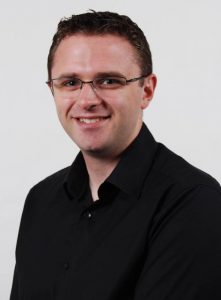
Dr Simon Watson
Manchester University
Presentation slides
This presentation gives an overview of the types of mobile robots which are being developed to support the decommissioning of nuclear sites like Sellafield and Fukushima. There are significant challenges in deploying robots to characterise potentially radioactive environments, such as size, payload, power, communications, localisation and the effects of radiation. A number of novel platforms are being developed to investigate these areas and provide information which can be used to plan retrievals and decommissioning.
Dr. Simon Watson is a Lecturer in Robotic Systems at the School of Electrical and Electronic Engineering at the University of Manchester. He obtained his MEng in Mechatronic Engineering in 2008 and his Ph.D. in 2012, both from the University of Manchester. His research focus is on mobile robots for the exploration and characterisation of hazardous and extreme environments, and active areas of research include novel platform design, communications and localisation, sensing and navigation and multi-level control. His current research portfolio includes developing robots for the nuclear industry (for the Sellafield and Fukushima sites), power generation (offshore wind) and agriculture (pest control). He also works closely with industry to take robotic platforms from University prototypes through to commercially viable systems, such as the AVEXIS underwater vehicle, which was recently deployed on the Sellafield site.

Dr Sarah Fletcher (Replaced by Osman Tokhi)
Cranfield University
Presentation slides
The presentation will give an overview of robot ethics and how societal issues are impacting on robot developments. The UK’s work in developing guidelines for the ethical design of robots (BS 8611) will be introduced.
Sarah joined Cranfield in 2000 to complete a Ph.D. investigating the impact of human variability in highly automated manufacturing systems (funded by Ford Motor Co.). She has since conducted and supervised several human factors research projects in a wide range of contexts but primarily for the manufacturing industry. In 2012, Sarah developed the Industrial Psychology and Human Factors group to focus on research and development for the integration of humans and intelligent automation in manufacturing. With a strong funded research interest in the human-centred development of safe and efficient intelligent work systems, Sarah is currently a member of both the BSI’s AMT/10 Robotics National Committee on robot standardisation and the Workplace Standards Strategic Advisory Group. |She also is the UK representative on the ISO TC299 WG3 on Industrial robot safety. Sarah is leading Cranfield’s Industrial Psychology and Human Factors research group to improve manufacturing work, environments, and human-centred processes. Her research is currently focused on human-robot collaboration, human skills capture (cognitive, tacit knowledge), and the integration of human factors in the design of intelligent automation and informatics systems.

Prof. Gurvinder S. Virk
CLAWAR & InnotecUK
Presentation slides
The presentation gives an overview of robotics from its early roots in traditional industrial manufacturing applications through the growing need for mobile robots to the current growing interest in service robots for both medical and non-medical scenarios. Throughout these developments, the technical and non-technical challenges have grown and how these are being addressed will be described. In the main, the design basis for the traditional applications has been to keep robots and humans apart due to safety concerns. More recently, the trend is towards involving close human-robot interactions to realise service robots for assistive applications especially to address the global ageing society problems. These have led to new ISO robot standardization projects and activities to address growing ethical concerns.
Professor Gurvinder S. Virk (BSc, PhD, DIC, FIET, FCIBSE, CEng, CMath, FIMA, MIEEE). Prof Virk is Technical Director at InnotecUK Limited in with responsibility to lead R&D projects and technical innovations for realising intelligent inspection robot systems for hazardous applications; in addition he is Adjunct Professor at IIT Ropar, India. He holds a PhD in Control theory from Imperial College, University of London, UK and his current interests are in commercialisation of NDT inspection robots, wearable exoskeleton robots for health and wellbeing, medical robots for rehabilitation, active and assistive living applications, robot safety standardisation, robot modularity and inter-operability, social robotics and robot ethics. He has held senior academic leadership roles in UK (Universities of Bradford, Portsmouth and Leeds), New Zealand (Massey University) and Sweden (University of Gävle) as well as visiting Professor positions in China (Zhejiang University), France (Université Pierre et Marie Curie, Paris), and Germany (Fachochschule Südwestfalen, Soest). He is also Trustee and Treasurer of the UK registered charity CLAWAR whose mission is to advance robotics for the public benefit (see www.clawar.org). He has been awarded, the Freedom of the City of London for his work in promoting Information Technology and is a Freeman of the Worshipful Company of Information Technology.
He has held several grants from national and European sources (total value ≈€20m), as well as industry. He has produced over 350 papers in these areas and 14 books, and 16 successfully supervised PhDs. Prof Virk is also a key actor in robot standardisation and has led or is leading several international robot standardisation groups, namely:
• ISO TC299/ SG1 Gaps and structure
• ISO TC299/ WG2 Personal care robot safety, 2006-2016
• IEC TC62/SC62A & ISO TC299/ JWG9 Medical electrical equipment and systems using robotic technology
• ISO TC299/ JWG5 Medical robot safety
• ISO TC299/ WG6 Modularity for service robots
These groups are developing important standards for new emerging robots.

Luke Hares
Cambridge Medical Robotics
Presentation slides
Robotics and minimal access surgery have a history together going back forty years. This development has been driven by desire to combining the precision and reach of robotics with the skill and knowledge of human surgeon. The talk will offer a short trip through this history and some thoughts on future developments in this area.
Luke Hares is Technical Director at Cambridge Medical Robotics (CMR). He a physicist with practical multidisciplinary engineering skills and, for the past 20 years, has been involved in the conception and development of many products and medical devices. Luke was responsible for the Versius concept, created in response to the need for a better way to perform laparoscopic surgery. Before co-founding CMR he worked for Cambridge Consultants and Sagentia in the UK and the US, where he worked on medical devices, robotics, ASIC developments and consumer products.
Luke believes the best devices are created by combining a detailed knowledge of the unmet needs of the users with the creative application of a broad knowledge of available technology. Regular contact and interaction with the users of the product are essential for this process. Luke is responsible for leading the CMR technology team and has overall responsibility for the technology strategy of the company. He is accustomed to championing ideas, communicating technically complex ideas and designing and managing the development of complex systems. He regards his particular areas of expertise as imagination, a focus on the user and the application, and multidisciplinary system design.

Dr Peter O’Neill
Sheffield Hallam University
Presentation slides
The presentation gives a personal overview to the present day, then moves into the modules and research projects being carried out at Sheffield Hallam to introduce the idea of inclusion within their applications. Conventional access methods of those with motor, sensory and cognitive impairments and possible areas where robots could become an invaluable assistive technology. The challenges of using these conventional interactive methods to control robots will be described and how alternatives could be realised for persons with disabilities.
Dr. Peter O’Neill is Senior Lecturer at Sheffield Hallam University since 2009 where he has run four modules in the area of programming and has research interests in assistive technology and how this can be realised via robotics. He holds a BSc (Hon) in Software Engineering and Ph.D. focussed on human-computer interaction, both from Sheffield Hallam University. He has worked the Department of Medical Physics and Clinical Engineering at Barnsley Hospital where his duties included developing software assistive technology applications, one of which would drive an electric wheelchair. He was also involved in a start up on software development. In addition, he was required to use his own personal knowledge of disability (he was born disabled) to enhance the quality of service and understanding of service staff providing for the residents of those living within the Barnsley hospital catchment area.
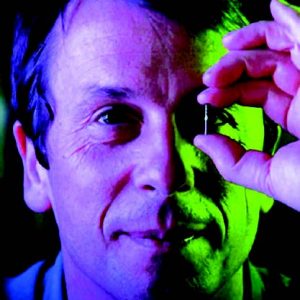
Prof. Kevin Warwick,
Coventry University, UK
Presentation slides
In this presentation a practical look is taken at how the use of implant and electrode technology can be employed to create biological brains for robots, to enable human enhancement and to diminish the effects of certain neural illnesses. In all cases the end result is to increase the range of abilities of the recipients. An indication is given of a number of areas in which such technology has already had a profound effect, a key element being the need for a clear interface linking a biological brain directly with computer technology.
Kevin Warwick is Emeritus Professor at Reading and Coventry Universities. His research areas are artificial intelligence, biomedical systems, robotics and cyborgs. Kevin is a Chartered Engineer and a Fellow of the IET who has published over 600 research papers. His experiments into implant technology led to him being the cover story on the US magazine, ‘Wired’. He achieved the world’s first direct electronic communication between two human nervous systems, the basis for thought communication. He has been awarded higher doctorates (DSc) by Imperial College and the Czech Academy of Sciences. He received the IET Mountbatten Medal, the Ellison- Cliffe Medal from the Royal Society of Medicine and presented the Royal Institution Christmas Lectures.

Fedrico Rossi,
LSBU
Presentation slides
This presentation will give an overview of various robot machining applications used in the field of design, art and architecture. A comprehensive presentation to cover the processes behind the digital design, large data handling, the kinematic simulation and manufacturing of large complex geometries and assembled objects as results of various collaborations in academia, digital artists and design practices. As well there will be a tour at the Digital Architecture and Robotic Lab showing projects results and live robotic demonstrations.
Federico Rossi studied architecture in Florence before to complete his studies at the Architectural Association in London. Federico founded the design practice frform.com to continue his research between design and digital manufacturing. In 2010 joined the London South Bank University as senior lecturer, where consequently he founded the DARLAB – Digital Architecture & Robotic Lab – an experimental lab on robotics applied to design and architecture. He is member of Intelligent Factory an Italian industry research cluster and member of robots in architecture for robotic application for the built environment.
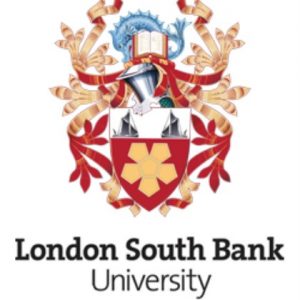
London South Bank University
Location
Keyworth Centre
Venue Details
Keyworth Centre,
Keyworth Street,
London,
SE1 6NG
For details of how to find the venue, please click on the link below:
http://www.lsbu.ac.uk/about/maps.shtml
Gurvinder S. Virk;
gsvirk@clawar.org
Dr. Ashutosh Choubey; choubeya@lsbu.ac.uk
London South Bank University
The events are organised by MTC, LSB University and CLAWAR Association Limited as core partners.


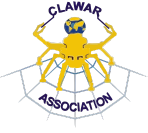
MTC (Manufacturing Technology Centre) was established in 2010 as an independent Research & Technology Organisation (RTO) to provide integrated manufacturing system solutions for customers large and small, across sectors as diverse as automotive, aerospace, rail, informatics, food & drink, construction/civil engineering, electronics, oil & gas and defence.
London South Bank University (LSBU) is celebrating 125 years this year. Established as the Borough Polytechnic Institute in 1892, the original aim of LSBU was ‘to promote the industrial skill, general knowledge, health and well-being of young men and women’, which remains remarkably similar today. Their continuous focus on vocational education and professional opportunity allows them to produce graduates who can meet the challenges of today’s workplace.
CLAWAR is a UK registered charity with the mission: “The advancement of education and science for the public benefit in the field of robotics and associated technologies” (see www.clawar.org)














